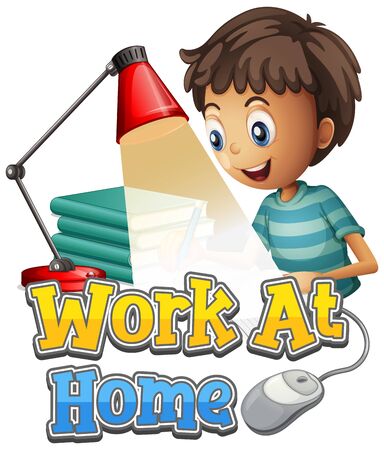Understanding the U.S. Job Fair Landscape
Job fairs are an important part of the job search process in the United States. These events give job seekers and employers a chance to connect in person or online, exchange information, and explore potential opportunities. If you are new to the American job market, understanding the different types of job fairs can help you make the most of these events.
Types of Job Fairs in the U.S.
| Type of Job Fair | Description | Who Should Attend? |
|---|---|---|
| Campus Job Fairs | Hosted by colleges and universities, these fairs connect students with entry-level roles, internships, and graduate programs. | College students, recent graduates |
| Industry-Specific Fairs | Focused on particular sectors like technology, healthcare, finance, or education. Employers look for candidates with specific skills or experience. | Professionals or students interested in a certain industry |
| Virtual Job Fairs | Held entirely online; participants can interact through chat rooms, video calls, and digital booths from anywhere. | Anyone seeking flexibility or unable to attend in person |
| Diversity-Focused Fairs | Aimed at promoting equal opportunity; often organized for underrepresented groups such as minorities, women, veterans, or people with disabilities. | Candidates seeking inclusive workplaces; employers focused on diversity hiring |
Why Are Job Fairs Important in American Culture?
Job fairs play a key role in the U.S. hiring process. They provide a unique chance for face-to-face networking, which is highly valued in American work culture. Employers use job fairs to identify motivated candidates and speed up their recruitment process. For job seekers, these events offer valuable access to multiple employers at once and an opportunity to practice professional communication skills. Attending job fairs also shows initiative—a trait that is often appreciated by American employers.
2. Preparation: Laying the Groundwork for Success
Tips for Researching Employers
Before heading to a job fair, it’s crucial to know which companies will be there and what they’re looking for. Start by reviewing the list of participating employers on the event website. Visit each company’s official website, check their latest news, and review open positions that match your interests and skills. Take notes on their mission, values, and recent achievements. Being informed shows genuine interest and gives you conversation starters when you meet recruiters.
Key Information to Research
| What to Look For | Where to Find It |
|---|---|
| Company Mission & Values | About Us page on company website |
| Recent News or Projects | Press releases, company blog, social media |
| Open Positions | Careers page on company website, LinkedIn |
| Industry Standing | News articles, industry rankings |
| Cultural Fit | Employee reviews on Glassdoor, Indeed |
Updating Your Resume for U.S. Standards
Your resume is often your first impression. Make sure it is up-to-date, clear, and tailored for the American job market. Use concise language and quantify your achievements with numbers when possible (e.g., “Increased sales by 20%”). Remove unnecessary personal details like photos or marital status—these aren’t standard in U.S. resumes.
Resume Checklist
- Contact information (phone number, email address)
- Professional summary or objective statement (optional but helpful)
- Relevant work experience listed in reverse chronological order
- Education and certifications
- Key skills tailored to each employer’s needs
- No photos or personal information unrelated to the job
- Error-free formatting and spelling
Perfecting Your Elevator Pitch
An elevator pitch is a quick introduction that highlights who you are, what you do, and what you’re looking for—all in about 30 seconds. Practice your pitch until it feels natural and confident. Tailor it for different employers based on your research.
Sample Elevator Pitch Structure:
- Name and current role or field of study
- Your top skills or experiences relevant to the employer
- Your career goal or what you’re seeking at the job fair
- A question or statement that shows interest in the company (“I’m really interested in how [Company] is expanding its tech division.”)
Dressing Appropriately for American Workplace Expectations
The way you dress can make a strong first impression. In most cases, business casual attire is appropriate for job fairs in the U.S. That means slacks or khakis, a collared shirt or blouse, closed-toe shoes, and minimal accessories. If you’re unsure, it’s better to be slightly overdressed than underdressed.
| Recommended Attire for Job Fairs (U.S.) |
|---|
| Neat slacks or skirt (knee-length or longer) |
| Polo shirt, button-down shirt, or blouse (no T-shirts) |
| Sensible closed-toe shoes (avoid sneakers/flip-flops) |
| Belt and minimal jewelry/accessories |
| Tidy hair and light makeup (if any) |
| No heavy perfume/cologne |
Assembling All Necessary Materials
The last step before attending a job fair is gathering everything you need to make a great impression. Here’s a checklist to keep you organized:
- Multiple copies of your resume (bring at least 10-15)
- A professional-looking folder or portfolio to carry documents
- A notepad and pen for taking notes during conversations
- A list of target employers with key information about each one
- Your elevator pitch printed out as a reminder (optional)
- Mints or breath freshener (no chewing gum during conversations!)
- Your calendar app ready in case an employer wants to schedule an interview on the spot
- A bottle of water to stay hydrated between meetings
![]()
3. Navigating the Event: Making the Most of Your Interactions
Best Practices for Introducing Yourself
First impressions matter at U.S. job fairs. When you approach a recruiter, smile, make eye contact, and offer a firm handshake if appropriate. Prepare a quick “elevator pitch”—a 30-second summary of who you are, what you’re studying or your professional background, and what kind of opportunities you’re seeking. Here’s an easy template to help you craft your introduction:
| Element | Sample Content |
|---|---|
| Name & Greeting | Hi, my name is Alex Johnson. It’s great to meet you! |
| Background | I’m currently a senior majoring in Computer Science at UCLA. |
| Interest/Goal | I’m interested in software development internships for next summer. |
Engaging Recruiters in Meaningful Conversations
After your introduction, build on the conversation by showing genuine interest in the company and its culture. Listen actively—nod, maintain eye contact, and respond thoughtfully to what recruiters say. Relate your skills and experiences to their needs wherever possible. For example, if they mention teamwork is important, briefly share an example of how youve worked successfully in teams before.
Tips for Effective Engagement:
- Be prepared: Know which companies you want to visit and learn basic facts about them beforehand.
- Be curious: Don’t be afraid to ask questions that go beyond what’s on the company’s website.
- Be yourself: Authenticity helps recruiters remember you.
Asking Insightful Questions
The right questions show recruiters that you’ve done your homework and are genuinely interested. Avoid generic questions like “What does your company do?” Instead, focus on specifics about roles, company culture, or growth opportunities. Here are some examples:
| Category | Sample Question |
|---|---|
| Role-Specific | What skills do you value most for entry-level positions at your company? |
| Company Culture | How would you describe the work environment here? |
| Growth Opportunities | What does career progression typically look like for new hires? |
| Diversity & Inclusion | Can you share any initiatives your company has to support diversity? |
Managing Your Time Efficiently During the Event
Job fairs can be overwhelming with so many booths and limited time. Create a plan before you arrive by listing the employers you’re most interested in. Prioritize them so you don’t miss out on key opportunities. Allocate time slots for each booth but stay flexible for unexpected chances.
Time Management Tips:
- Create a schedule: Write down the top 5-10 companies you want to visit and estimate how much time to spend at each.
- Avoid long lines at peak times: Visit popular booths early or later in the event when crowds thin out.
- Takes notes: Jot down key points from conversations so you can personalize your follow-up later.
- Pace yourself: Take breaks if needed—job fairs can be tiring!
Navigating a U.S. job fair can feel daunting, but with these practical tips, youll confidently make meaningful connections and maximize every opportunity that comes your way.
4. Leveraging U.S. Networking Etiquette and Resources
Understanding U.S. Networking Norms at Job Fairs
Networking is a core part of any job fair experience in the United States. Americans value friendly, confident interactions and clear communication. When you approach recruiters or other professionals, remember to smile, make eye contact, and offer a firm handshake if appropriate. Briefly introduce yourself and share your elevator pitch—this is a short summary about who you are, what you do, and what you’re looking for.
How to Collect Business Cards Effectively
Business cards are still widely used at job fairs in the U.S., even with digital alternatives available. When someone gives you their card, thank them and take a quick look at it before putting it away respectfully. If you run out of your own business cards, have your LinkedIn QR code ready to share digitally.
| Do’s | Don’ts |
|---|---|
| Take notes on the back of business cards after the conversation | Write on business cards in front of the giver |
| Follow up within 24-48 hours | Pocket cards without acknowledging them |
Making a Positive Impression
Your first impression matters! Dress professionally according to the event guidelines (business casual is usually safe). Be courteous, listen actively, and ask thoughtful questions about the company or role. Avoid interrupting others and keep your phone on silent mode during conversations.
Tips for Memorable Introductions
- Keep introductions brief but impactful (about 30 seconds)
- Mention your field of study or professional background
- Express genuine interest in the company or recruiter’s insights
Utilizing Event-Specific Tools and Resources
Many U.S. job fairs offer tools that can boost your networking success:
- Onsite Apps or Portals: Use these to check schedules, see employer profiles, and sometimes even book meeting slots with recruiters.
- Resume Drop Stations: Physical or digital stations where you can submit your resume directly to employers.
- Workshops & Panels: Attend these sessions to learn more about industries, companies, and hiring trends while making additional connections.
Comparison of Onsite vs Online Resources
| Resource Type | Description |
|---|---|
| Onsite Apps/Kiosks | Interactive tools for scheduling meetings or submitting resumes in person |
| Online Portals | Pre-event registration, employer research, virtual networking features |
Pro Tip:
If there’s a virtual component to the job fair, set up your profile ahead of time and upload your resume. This ensures recruiters can find you both during and after the event.
5. Effective Follow-Up: Sealing the Impression After the Fair
Why Following Up Matters
After a job fair, your interaction with recruiters doesn’t end at the booth. Following up shows professionalism, enthusiasm, and genuine interest in the opportunity. It also helps you stand out from other candidates who may not take this extra step.
How to Write a Personalized Thank-You Email
Sending a thank-you email within 24-48 hours of meeting a recruiter is key. Keep it short, specific, and personal. Mention something unique from your conversation or reference a topic you discussed. Here’s a simple structure to follow:
| Section | What to Include |
|---|---|
| Subject Line | Thank You – [Your Name] from [Event Name] |
| Greeting | Address the recruiter by name if possible. |
| Main Body | Thank them for their time, mention something memorable from your chat, and briefly restate your interest in the position or company. |
| Closing | Express willingness to provide more info and look forward to staying in touch. |
Email Example
Hello [Recruiter’s Name],
I enjoyed speaking with you at [Job Fair Name] about opportunities at [Company]. I appreciated learning more about your team’s culture and current projects. Our discussion about [specific topic] really resonated with me. Please let me know if you need any additional information. Looking forward to connecting further!
Sincerely,
[Your Name]
Connecting on LinkedIn
LinkedIn is a standard professional networking tool in the U.S. To keep the momentum going after the fair:
- Send a connection request within a day or two.
- Add a short, personalized note mentioning where you met and what you talked about.
- Keep your profile updated and professional before reaching out.
Sample LinkedIn Message
Hello [Recruiter’s Name], I enjoyed meeting you at [Job Fair Name]. I’m excited about opportunities with [Company] and would love to stay connected here on LinkedIn!
Maintaining Momentum in Your Job Search
The job fair is just one step—keep moving forward by:
- Tracking companies and contacts you met (a spreadsheet works great).
- Setting reminders to follow up again in 1-2 weeks if you don’t hear back.
- Continuing to apply for jobs online and networking through other channels.
- Reflecting on what worked well during your conversations to improve next time.
| Task | Timeline |
|---|---|
| Send thank-you emails | Within 24-48 hours after fair |
| Add recruiters on LinkedIn | Within 1-2 days after fair |
| Follow up again if needed | 1-2 weeks after initial contact |
| Continue applications/networking | Ongoing |
Nurturing these connections can turn initial meetings into real opportunities—and help you make the most of every job fair experience!


